Egg salad is a beloved classic, but even seasoned cooks can make mistakes that compromise its texture and flavor. Below is a guide to the most common mistakes people make with egg salad, and how to fix them for a perfect dish every time.
Overcooking the Eggs
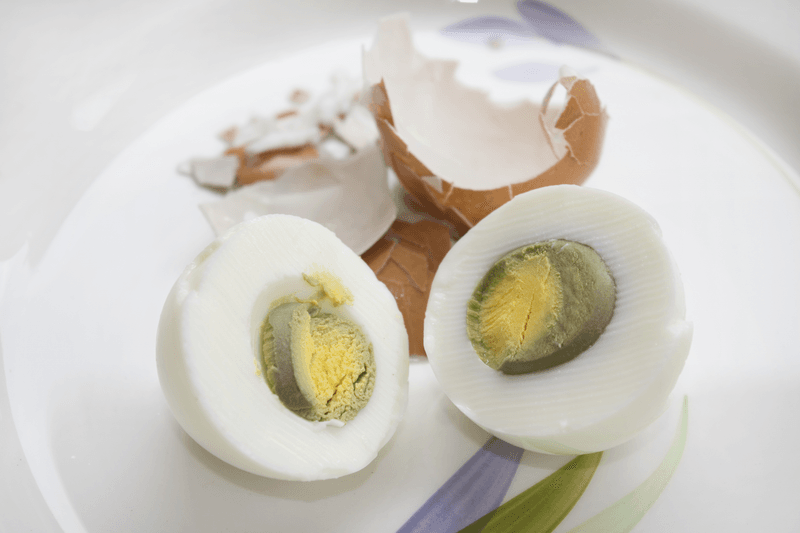
Eggs are the star of the show in egg salad, but overcooking them can lead to unappealing colors and textures. That gray-green ring around the yolk? It’s the result of a chemical reaction caused by overcooking. Besides being unsightly, it can give off a sulfuric taste that overshadows the intended flavors.
To avoid this, keep the eggs at a gentle simmer rather than a rolling boil. This ensures even cooking and vibrant yolks.
Remember, a perfectly cooked egg should have a tender white and a creamy, bright yellow yolk.
Using Cold Eggs

Have you ever tried peeling a cold, hard-boiled egg? It’s a task not for the faint-hearted. Cold eggs are notoriously difficult to peel, often resulting in a frustrating mess.
For an easier experience, let the eggs reach room temperature before boiling. This small change makes a world of difference, allowing for smooth, clean peeling every time.
Additionally, room-temperature eggs cook more evenly, ensuring a balance of textures in your egg salad.
Skipping the Ice Bath
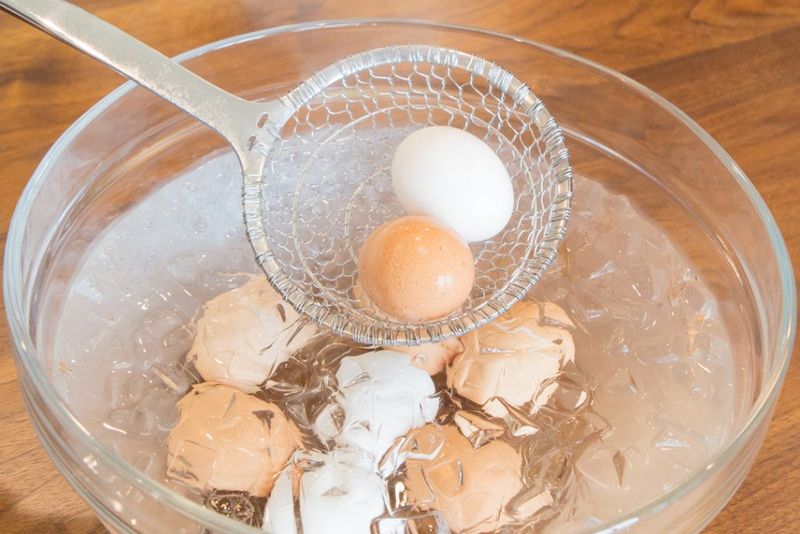
After boiling, the eggs need an immediate plunge into an ice bath. This step halts the cooking process, preventing overcooking and helping to maintain a vibrant yolk color.
Skipping this vital step can lead to eggs that continue cooking from residual heat, risking that dreaded gray-green yolk. Moreover, an ice bath also aids in making the peeling process much easier.
Next time, ensure your hard-boiled eggs are cooled down rapidly for the best results.
Under-seasoning the Salad

Egg salad can often fall flat in flavor when under-seasoned. Even the best-cooked eggs can’t shine without the right seasoning. A pinch of salt and pepper is essential, but why stop there?
Consider adding mustard, fresh herbs, or even a dash of curry powder for an unexpected kick. Seasoning is your chance to layer flavors, turning a simple dish into something extraordinary.
Next time, taste as you go to find that perfect balance.
Using the Wrong Mayonnaise
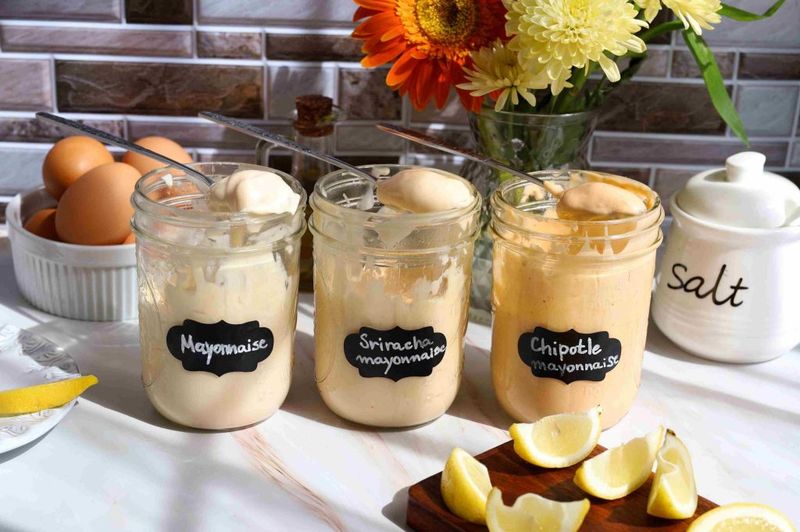
The mayonnaise you choose can make or break your egg salad. A too-sweet or overly tangy mayo can overpower the dish, masking the delicate egg flavor.
Opt for a balanced mayonnaise that complements rather than dominates. Some prefer homemade mayo for its fresh taste, while others might go for a classic brand with a balanced profile.
Remember, the key is harmony between the eggs and the mayonnaise.
Chopping the Eggs Too Fine
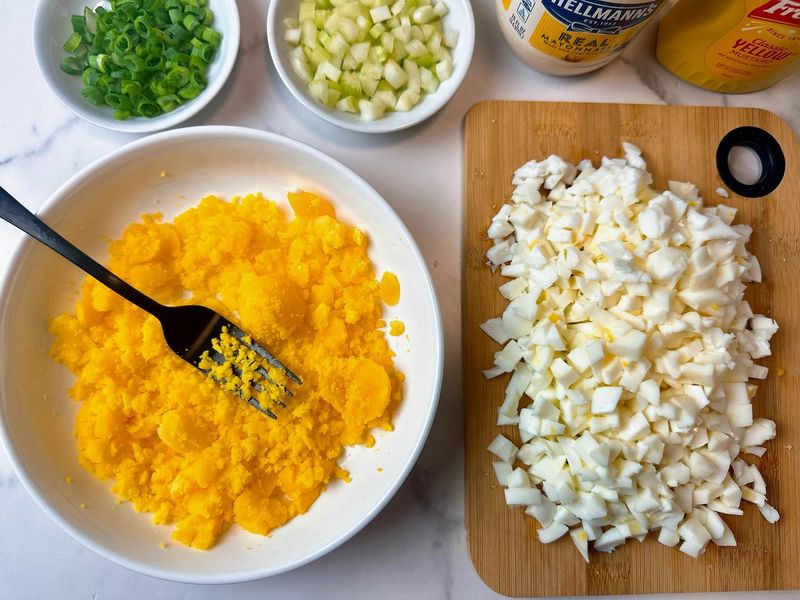
Texture is crucial in egg salad, and chopping the eggs too finely can turn the salad into a mush. You lose the delightful contrast between creamy yolk and tender white.
Instead, aim for roughly chopped eggs to maintain a pleasant bite. This helps in showcasing the salad’s star ingredient while keeping the overall texture interesting.
Remember, the goal is a salad, not a paste.
Ignoring Acidity Balance
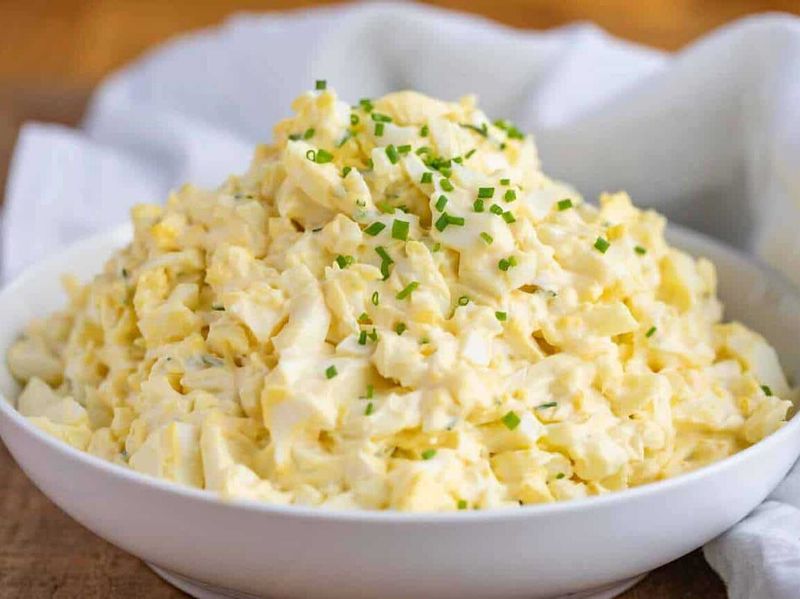
A touch of acidity can elevate your egg salad, bringing brightness and balance. Without it, the salad may taste heavy and flat.
Consider adding a splash of vinegar or a squeeze of lemon juice to cut through the richness of the mayonnaise. This simple addition can transform the salad, providing a refreshing zing.
Remember, acidity should complement, not dominate the salad’s flavor.
Using Stale Bread

Imagine crafting the perfect egg salad only to serve it on stale bread. The bread is as important as the filling, providing a soft, supportive base.
Fresh, soft bread complements the creamy salad, enhancing each bite. Toasting the bread can add a pleasant crunch, contrasting with the salad’s texture.
Remember, a fresh foundation is key to a satisfying egg salad sandwich.
Not Allowing Flavors to Meld
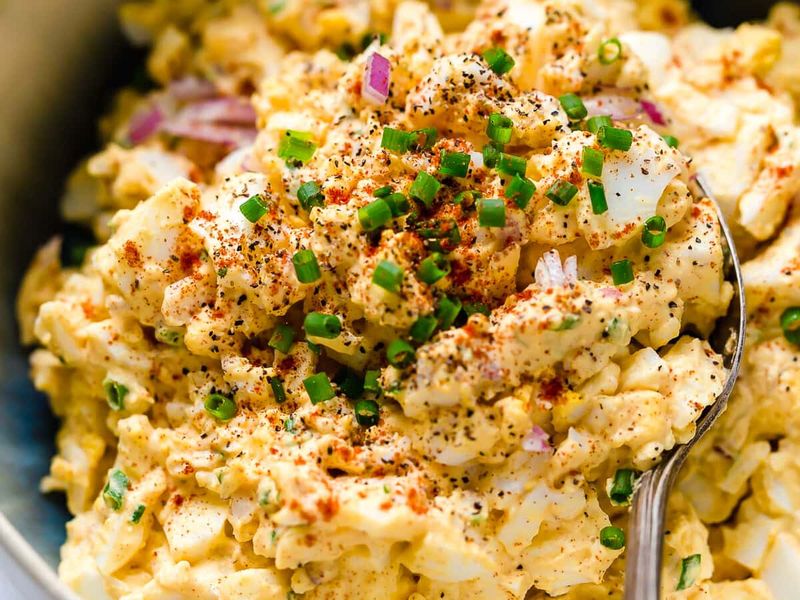
Patience can make a difference in egg salad. Allowing the salad to rest in the fridge lets the flavors meld, creating a more cohesive taste.
Rushing to serve it immediately might mean missing out on depth and complexity. A brief rest period gives the seasonings time to infuse the eggs and mayonnaise.
Next time, give your salad a little chill time before serving.
Overloading with Add-ins
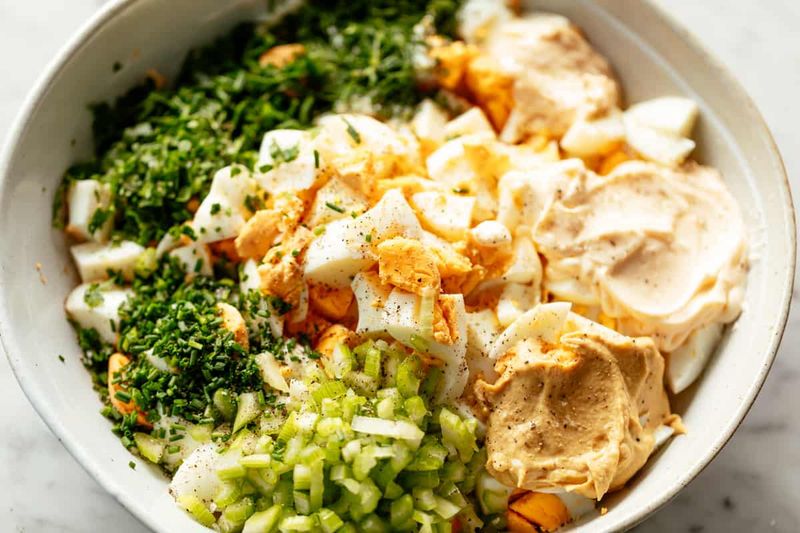
Add-ins can enhance or overwhelm. Too many additions can mask the delicate flavors of the eggs.
While celery, onions, or pickles can add crunch and zest, moderation is key. Focus on a few complementary flavors rather than a jumble of ingredients.
Next time, choose add-ins wisely to let the eggs star in the dish.
Forgetting Fresh Herbs

Fresh herbs can transform a basic egg salad into something extraordinary. Yet, they often get overlooked.
A sprinkle of dill, chives, or parsley can add a burst of freshness and color, enhancing the dish’s appeal. Consider experimenting with different herbs to find your perfect combination.
Next time, don’t shy away from adding a green touch to your salad.
Using Low-Quality Eggs
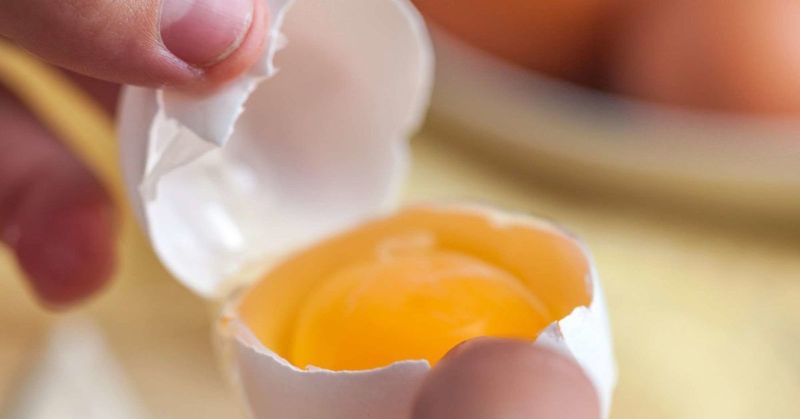
Starting with high-quality eggs makes all the difference in egg salad. Eggs from pasture-raised hens often have richer, more flavorful yolks.
Choosing low-quality eggs can mean missing out on that rich, creamy yolk that defines great egg salad. When possible, opt for the best eggs you can find.
Your salad will be all the better for it.
Neglecting Texture Variety

A monotonous texture can make egg salad less appealing. Including elements like celery, nuts, or even bacon can add a delightful crunch that contrasts with the creamy eggs.
Be mindful of balance; too much crunch can overshadow the eggs. Still, a bit of variety can elevate the salad from ordinary to extraordinary.
Next time, think about how each bite feels, not just how it tastes.
Serving at the Wrong Temperature
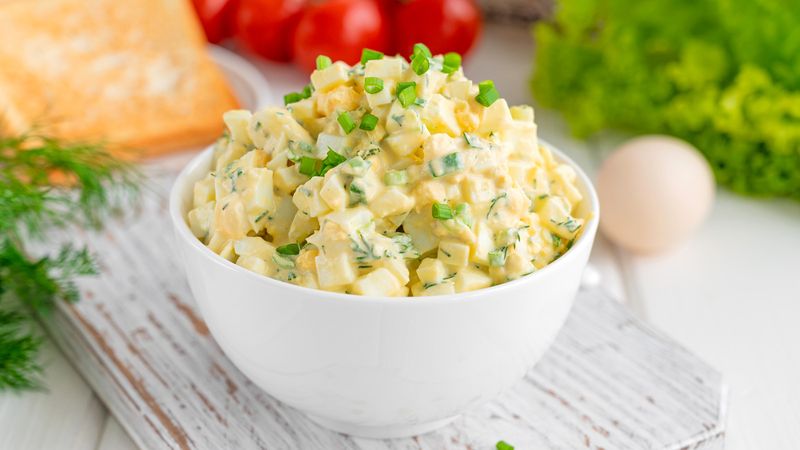
Temperature impacts flavor and texture in egg salad. Serving it too cold can dull the flavors, while too warm might make it less appetizing.
Aim for a slightly chilled serving, bringing out the salad’s best traits. If refrigerated, allow it to sit at room temperature briefly before serving.
Remember, a perfectly tempered salad is a delightful salad.
Leave a comment